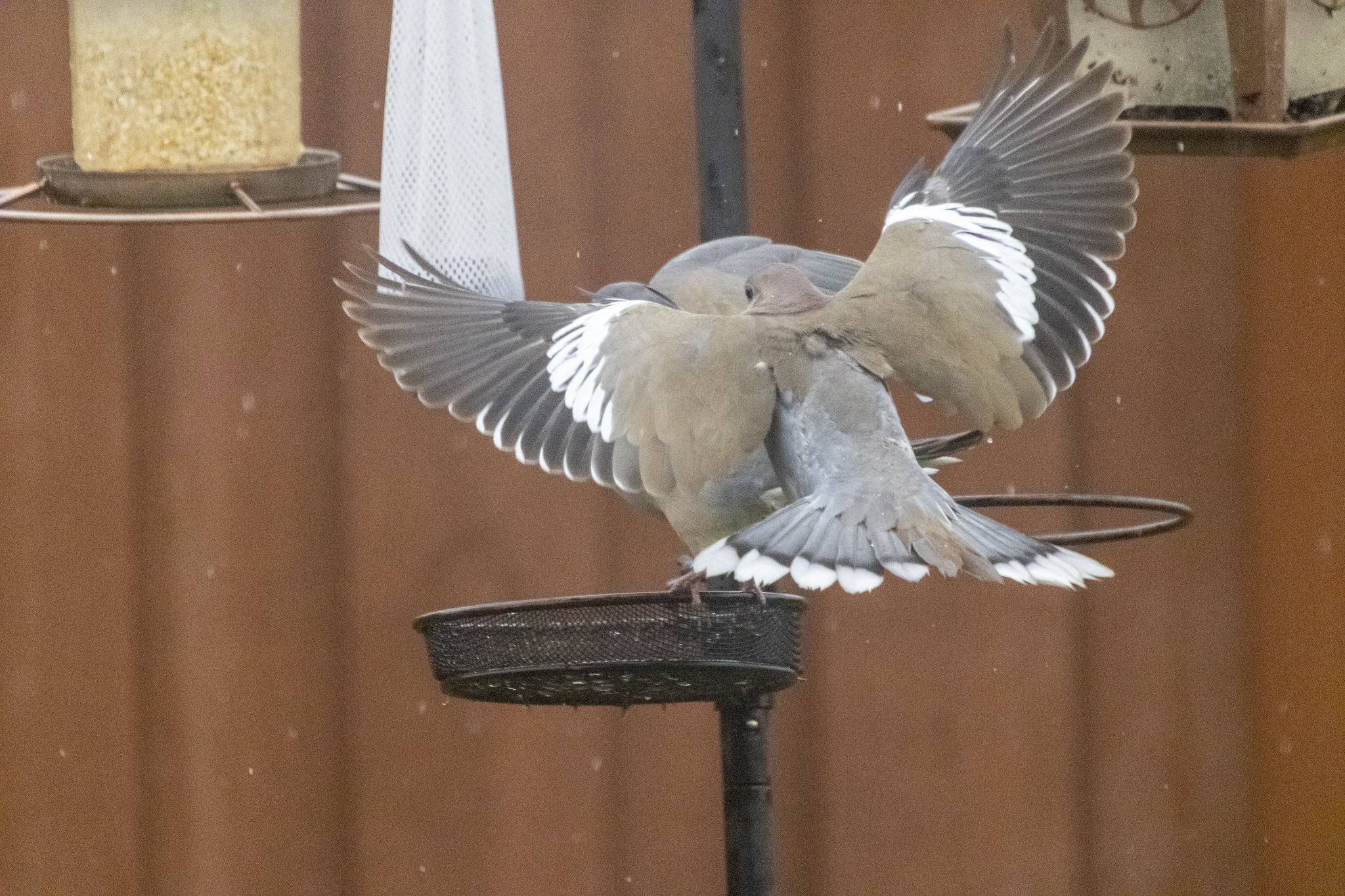A few thoughts
1) Yep high ISO on a camera like that (2000D) is going to give you noise in those higher ISOs. It's basically the cost you pay for setting your ISO that high.
I don't know the lens you've got but 500mm at f6.3 and I'll guess that its one of the zooms and that your aperture was wide open (smallest f number) so you're already letting in the most light you can and whilst your shutter speed is fast, you're clearly going for those more static wing captures so yep that's going to be hard to come down much slower than that whilst getting a sharp shot of the bird and wings and such.
In the end you've used the right settings for the situation. Now one truth is that noise shows up more if you underexpose and then brighten in editing. Though you're already pretty high and you said you didn't make many adjustments so might be your exposure isn't too bad.
When you shoot do you use the histogram when reviewing photos on the back of the camera?
2) Noise can be handled by noise reduction software in editing - photoshop and lightroom both have powerful noise removal features which can be used to help reduce noise whilst at the same time you might have to sharpen to boost the sharpness since noise removal will affect overall sharpness.
There are fancy ways to make masks which let you remove noise from the background areas only whilst letting you then sharpen only on the foreground. Using layermasks nad the brush tool you can thus select where you want either effect on a new layer in photoshop. This can be great for removing a lot of noise from backgrounds and keeping the subject sharp.
3) One thing I do notice is that the whites in your shot are looking quite strong/bright/overexposed. Or if not overexposed very close to it. Now this suggests that even on the overcast day you were still shooting at a brighter time when the sky was overcast but the sun still high.
4) I think one issue you've got no matter the light quality is the actual scene before you; in the end its still birds on a feeder with a slightly blurry fence/shed behind. What you might want to experiment more with is trying different angles if you can and manipulating situation. Even just moving the feeder "forward" in the scene (ergo closer to you) so that when you focus on the bird the background is thrown more into blur.
You've a lure for the birds, but you might want to "construct" things around that lure to best help you.
Overall there are times, especially with action and wildlife, where the light is soft but not strong enough and its a pain. In the end you can either put the camera down; reach for high ISOs or use flash if possible. Though flash opens up a whole other can of worms of its own, especially if you want to use it a as a main light not just as a fill light. For subjects that far off and of that nature the actual use of flash is often not an issue, but the setup to make the light pleasing can be more tricky to achieve.
 DoveLanding01 by Jeff Ashman, on Flickr
DoveLanding01 by Jeff Ashman, on Flickr DoveLanding02 by Jeff Ashman, on Flickr
DoveLanding02 by Jeff Ashman, on Flickr DoveLanding01 by Jeff Ashman, on Flickr
DoveLanding01 by Jeff Ashman, on Flickr DoveLanding02 by Jeff Ashman, on Flickr
DoveLanding02 by Jeff Ashman, on Flickr
 DoveLandingOnFeeder
DoveLandingOnFeeder







![[No title]](/data/xfmg/thumbnail/35/35953-1a8b92df0115ff7026f31b78855ac815.jpg?1734167764)

![[No title]](/data/xfmg/thumbnail/35/35956-7047189d31e1c1f6029266079390f54a.jpg?1734167778)
![[No title]](/data/xfmg/thumbnail/37/37603-739c5d9b541a083a12f2f30e45ca2b7b.jpg?1734170731)
